Summary of climate disasters on the planet, October 8–14, 2025
Record-breaking floods once again hit Spain.
A massive thermal anomaly has formed in the Pacific Ocean.
An unprecedented upwelling disruption occurred in the Gulf of Panama.
An extremely rare phenomenon for these latitudes struck Alaska.
What lies behind all these natural anomalies is inside every single person on Earth.
This is what today’s weekly report, covering October 8 to 14, 2025, is about.
Spain
Starting from October 9, the eastern coast of Spain was gripped by the first high-impact Dana of the autumn season, and was given an official name – Storm Alice.
At first, it struck the region of Murcia. Then, shifting northward, it hit Valencia and Catalonia and reached the Balearic Islands.
Rainfall amounts reached historic highs: peak downpours occurred on October 11, when the municipality of Carcaixent recorded up to 111 mm (4.4 in) of rain in just one hour.
By October 13, the Columbretes Islands registered a record total of 325 mm (12.8 in) of rainfall.
Water flooded streets, basements, and ground floors in numerous towns and cities.
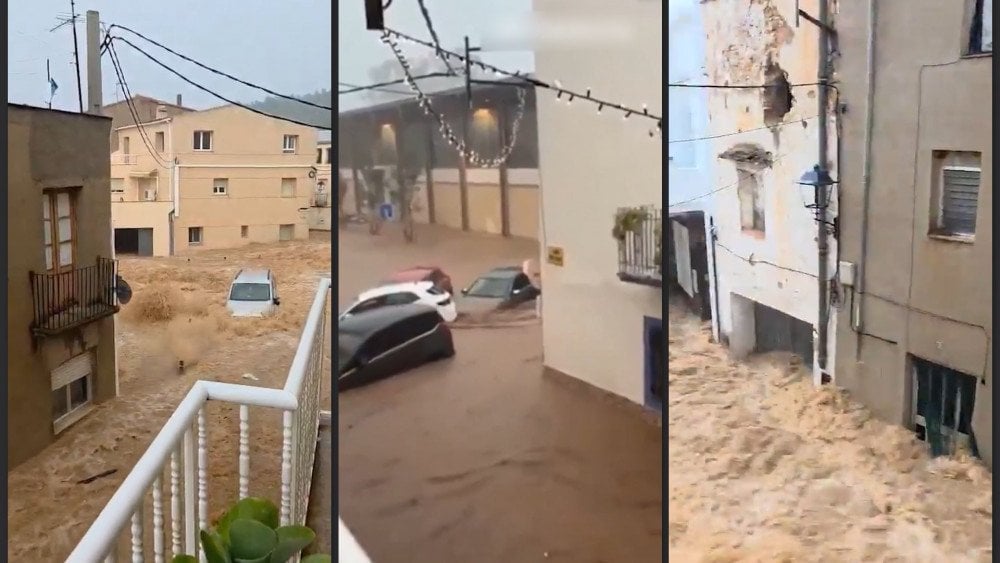
Torrential rains brought by Storm Alice flooded streets across eastern Spain
About 400 people were evacuated, and hundreds of rescue operations were carried out to save residents from flooded homes and vehicles.
Agriculture suffered severe damage. In Valencia, over 500 hectares (1,235 acres) of rice fields were flooded. In Murcia and Catalonia, orchards and farms were damaged, part of the harvest was completely lost.
Transportation infrastructure faced massive disruptions: major highways, including the Mediterranean Motorway (AP-7), were closed, and railway service between Barcelona and Valencia was suspended.
On October 11, the Ibiza Airport temporarily shut down after its runway and terminal were flooded. That same day, 19 flights were cancelled at Palma de Mallorca Airport.
As of October 14, 18 people had been injured, one of them seriously. Fortunately, this time, there were no fatalities.
Philippines
On October 10, two powerful earthquakes struck the southern Philippines — yet another trial for the country that had recently suffered from a devastating 6.9-magnitude quake and several typhoons.
The first tremor, with a magnitude of 7.4, occurred at 9:43 a.m. local time in the Pacific Ocean, about 48 km (30 mi) off the city of Manay in Davao Oriental province, at a depth of 23 km (14 mi).
Authorities issued a tsunami warning for coastal areas within a 300 km (186 mi) radius of the epicenter. In coastal zones — the city of Mati and the municipalities of Manay and Baganga — thousands of residents were evacuated to higher ground.
Tremors were felt across dozens of settlements on the island of Mindanao. Cars swayed on the streets, and people ran out of their homes in panic.

People run out into the streets in panic during a powerful earthquake in the Philippines
Cracks appeared in the walls of several buildings, including Davao International Airport. Power outages were reported in multiple areas, while roads, bridges, and power lines sustained damage.
Schools conducted urgent evacuations, and 50 children from one educational institution were taken to hospitals with bruises, fainting, and dizziness.
A second earthquake, with a magnitude of 6.8, followed about 10 hours later, at 19:12 p.m. local time, about 43 km (27 mi) from Manay, at a depth of 37 km (23 mi).
This subsequent quake worsened the aftermath and caused new destruction in already affected areas.
According to the Philippine Institute of Volcanology and Seismology, by October 12, a total of 1,111 aftershocks had been recorded in less than two days, with magnitudes ranging from 1.2 to 5.8.
The disaster claimed 8 lives, and hundreds of people were injured.
Mexico
The unusually intense rainy season ended with two tropical storms passing along Mexico’s western coast — triggering record-breaking downpours beginning on October 6.

Catastrophic flooding in the state of Veracruz, Mexico
Rivers overflowed their banks, sending torrents of water into towns and villages. Landslides and floods cut off more than 300 settlements in central and eastern Mexico from the outside world. The hardest-hit states were Veracruz, Hidalgo, Puebla, Querétaro, and San Luis Potosí.
The disaster destroyed homes, damaged about 1,000 km (620 mi) of roads, and left over 380,000 people without power and communication.
In Veracruz, rainfall reached up to 540 mm (21.3 in) in some areas, leading to a record rise of the Cazones River. At dawn on October 10, water surged into the city of Poza Rica, flooding streets.
No flood warnings had been issued. Residents of low-lying districts — where water levels rose by more than 4 m (13 ft) — said they heard the roar of the approaching flood just minutes before it struck their homes.
Cars were swept away by powerful currents, and people escaped to rooftops. Sadly, many did not survive.

Raging floodwaters sweep away cars in the state of Veracruz, Mexico
Across the state, dozens of medical facilities were damaged, the floodwaters destroyed all equipment, forcing staff to treat victims outdoors.
In Puebla, about 80,000 people were affected. Torrential rains damaged 16,000 buildings and collapsed seven bridges.
The unprecedented rains triggered at least 340 landslides and mudflows across four states. In Querétaro, a 6-year-old boy was killed when the ground gave way.
In Hidalgo, more than 300 schools and about 60 medical institutions were destroyed or flooded.
As of October 13, 64 people had been confirmed dead across the country, dozens remained missing, and authorities warned that the true scale of destruction and casualties, especially in small remote towns, was still unknown.
Azerbaijan
On October 11, one of the world’s most famous mud volcanoes, Otman Bozdag, erupted near the capital city of Baku, Azerbaijan.
The eruption lasted for about 40 minutes and was accompanied by a powerful release of gas and mud. The depth of the eruption was approximately 4 km (2.5 mi).
Eyewitnesses reported that a column of flame first burst out of the crater, followed by a thick plume of smoke. Experts estimated that up to 60,000 m³ (2.1 million ft³) of mud breccia was ejected into the atmosphere. Fresh surface cracks and small streams of solidified clay were left behind on the slopes.

Eruption of the Otman Bozdag mud volcano in Azerbaijan
Breccia is a cemented mixture of angular rock fragments larger than 1 cm (0.4 in) in size.
It is worth noting that eruptions of Otman Bozdag used to occur much less frequently — once every several decades. However, in the past nine years, three eruptions have already taken place, the previous ones occurred in 2017 and 2018.
Japan
On October 9, powerful Typhoon Halong struck Japan’s Izu Islands, bringing fierce winds, record-breaking rainfall, and dangerous waves.
The island of Hachijō-jima was hit the hardest, where wind speeds reached nearly 54.7 m/s (196.9 km/h or 122.3 mph), with gusts up to 70 m/s (252 km/h or 156 mph) — equivalent to a Category 3 tropical hurricane. This was the first time in 20 years that wind gusts exceeding 50 m/s (180 km/h or 112 mph) were recorded in the region.
In just 12 hours, the island received 349 mm (13.7 in) of rain, and in 24 hours — a total of 356.5 mm (14.0 in), setting an absolute record for the recorded history in the area.
Hundreds of residents were forced to take shelter in evacuation centers.
The storm damaged buildings, tore off roofs, and uprooted trees across the island, blocking roads.
A large number of households were left without running water for several days due to power outages and landslides that damaged key water sources.

Aftermath of the powerful Typhoon Halong in Japan
Halong caused major disruptions to maritime transport throughout the country.
After the Port of Tokyo was closed, the giant cruise ship Ovation of the Seas — one of the world’s largest and most modern vessels operated by Royal Caribbean International — was forced to remain at sea with thousands of passengers on board, delaying its arrival by two days.
In the Pacific coastal city of Oiso, Kanagawa Prefecture, Honshu Island, three men were swept away by waves while fishing — one of them lost his life.
USA
During the night of October 12, the remnants of Typhoon Halong struck the western coast of Alaska, bringing hurricane-force winds up to 170 km/h (106 mph). A record storm surge, rising up to 2 m (6.6 ft) above normal, flooded the Kuskokwim River delta and several villages south of the Bering Strait. The hardest hit were the coastal Indigenous communities of Kwigillingok and Kipnuk.

Storm surge floods coastal villages in Alaska
At night, many residents found themselves in icy floodwaters, clinging to anything they could to stay afloat.
At least eight houses were torn from their foundations and swept away by raging currents. People trapped inside these drifting homes said they didn’t know where their house had ended up and desperately tried to call for help.
Search and rescue operations began at sunrise, once the storm subsided. People were airlifted from rooftops by helicopters.
The disaster damaged power grids and sewage systems across a wide area, while key roads and regional airports also suffered destruction.
Access to coastal settlements throughout the region was possible only by small aircraft or boats.
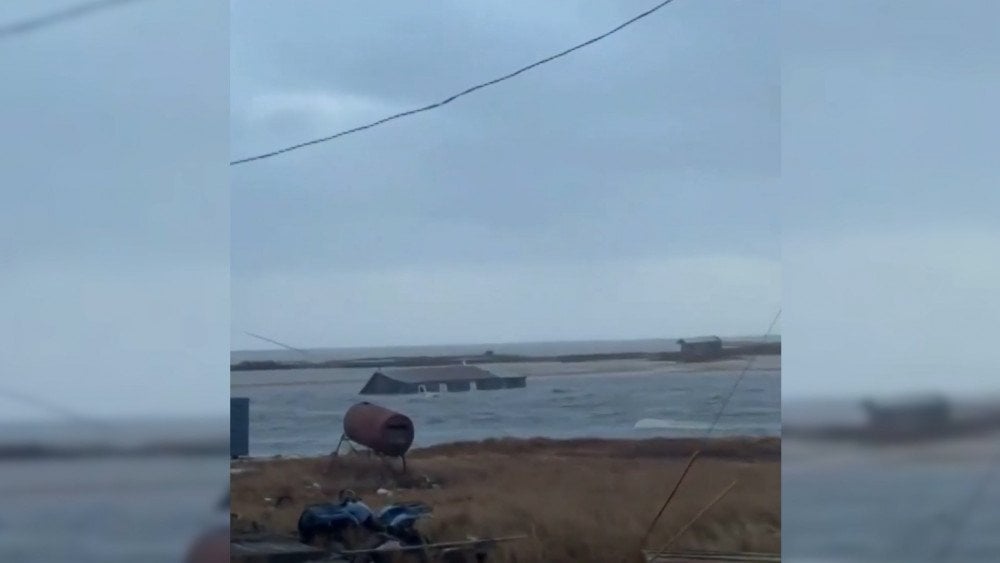
During the violent Alaskan storm, coastal houses were torn loose and swept into the sea
According to Alaska State Troopers, as of October 14, one fatality was confirmed in Kwigillingok, and two individuals remained missing.
This rare meteorological event demonstrates how the nature of Arctic storms is changing: remnants of tropical cyclones are increasingly reaching the region, fueled by the energy of abnormally warm ocean waters.
A vast and intense marine heatwave had developed in the Pacific Ocean, stretching about 8,000 km (4,970 mi) from Japan to the U.S. West Coast. In October, this belt of heated water lay directly in the path of the weakening Typhoon Halong. As a result, the storm re-intensified, transforming into a powerful extratropical cyclone that reached remote areas of Alaska, causing severe destruction and endangering lives.

Anomalous marine heatwave off the western coast of the United States
It is worth noting that, according to the U.S. National Oceanic and Atmospheric Administration (NOAA), over the past decade, the northern Pacific Ocean has been warming at the fastest rate of all the world’s ocean basins.
Oceanic Anomalies
Another marine heatwave in the northern Pacific Ocean formed in the coastal waters of China and South Korea. In the first half of October, sea surface temperatures exceeded the norm by 4–5 °C (7.2–9 °F). According to NOAA’s classification, this corresponds to Category 4, meaning an extreme heatwave.
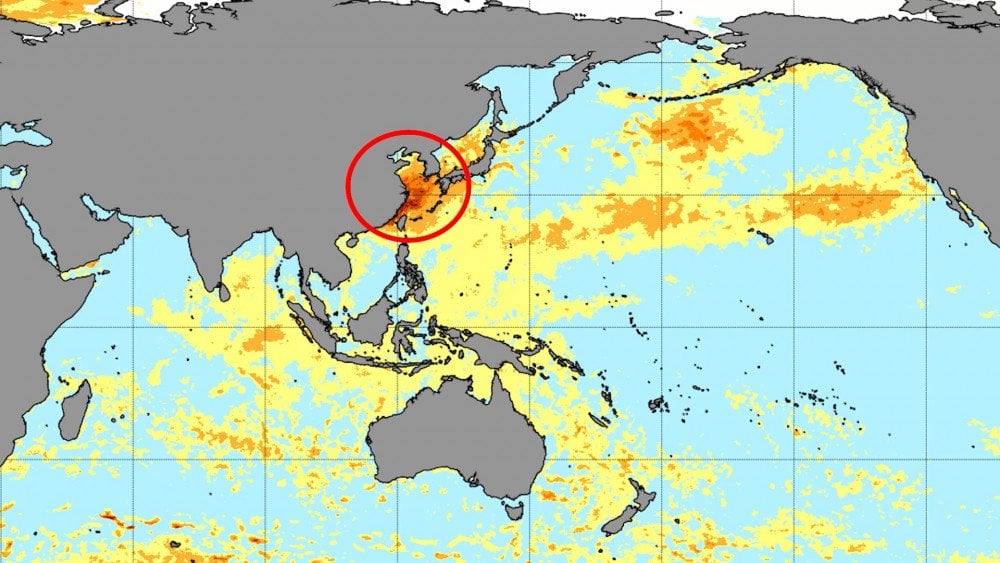
Extreme marine heatwave in the northern Pacific Ocean
Such anomalous ocean surface warming zones have been observed worldwide over the past two decades.
Studies show that marine heatwaves are becoming more frequent and more intense — their global annual frequency and duration are increasing. According to the study “Longer and More Frequent Marine Heatwaves over the Past Century”, published in Nature Communications, between 1925 and 2016, the global average frequency of marine heatwaves increased by 34%, while their average duration rose by 17%.
Even cold-water regions are now experiencing marine heatwaves. For instance, in the Arctic, between 2007 and 2021, 11 heatwaves were recorded – one of them, with a +4 °C (7.2 °F) anomaly, lasted 103 days.
These dangerous phenomena are almost impossible to forecast and have a devastating impact on ecosystems – causing coral bleaching, mass mortality of marine organisms, and changes in the composition of local species.
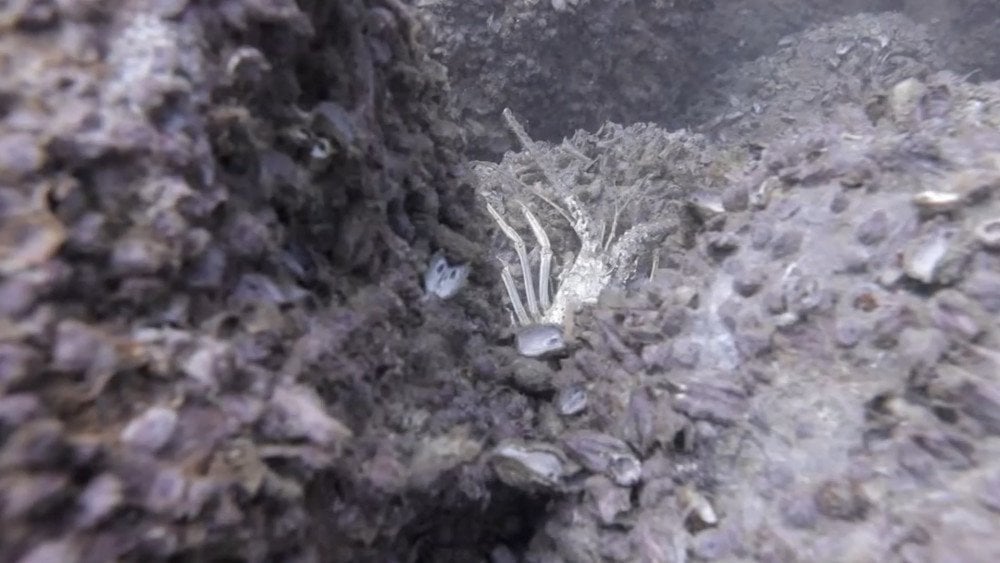
Abnormal marine heatwaves cause mass death of marine life and coral bleaching
Another disruption in the ocean’s steady annual cycles occurred in the Gulf of Panama.
For at least 40 years, the seasonal upwelling system of this region had consistently brought cool, nutrient-rich waters to the surface, driven by the northerly trade winds.
This process was remarkably predictable – it typically began on January 20, lasted 66 days, and reached minimum sea temperatures of about 19 °C (66 °F).
But in 2025, an abnormal breakdown of this seasonal upwelling occurred. The coastal waters of the Gulf of Panama began cooling 42 days later than usual, and their minimum temperature dropped only to 23.3 °C (73.9 °F). The number of cold days during the season was 82% lower than historical averages.
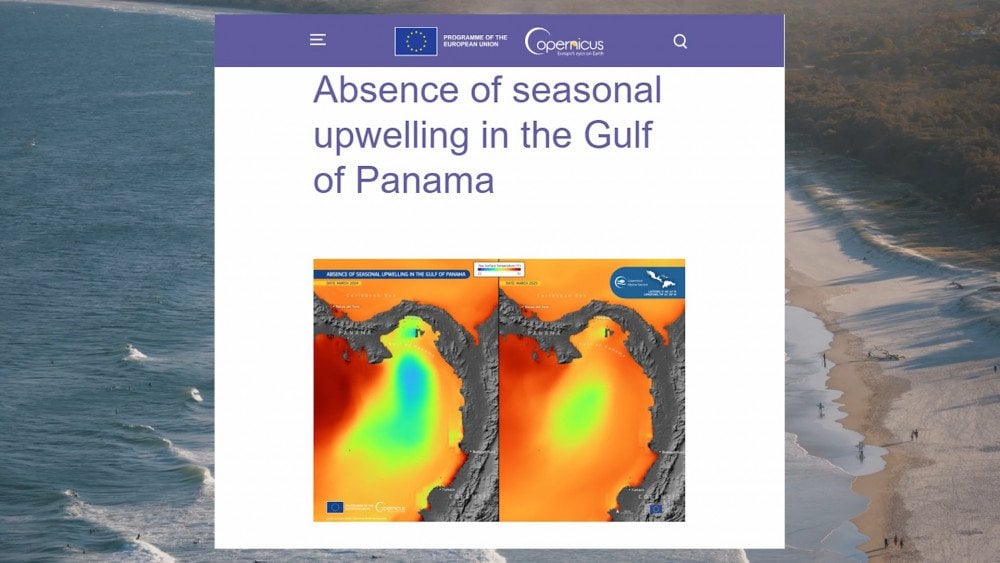
Disruption of seasonal upwelling in the Gulf of Panama leads to ecosystem imbalance
The unprecedented suppression of upwelling severely disturbed the region’s natural ecological cycle.
Experts suggest that the failure may be related to changes in wind patterns, yet the exact causes remain unclear. A particularly troubling question arises: was the 2025 episode an isolated anomaly, or the beginning of a new pattern of upwelling disruptions?
Ocean ecosystems function like a delicate clockwork mechanism, maintaining the fragile balance essential for life on Earth. But today, the World Ocean stands on the brink of collapse, because its waters are saturated with a material familiar to every one of us – plastic – or more precisely, its micro- and nanoparticles, which form as it breaks down under sunlight and saltwater.
The accumulation of these synthetic particles in the water column alters its thermal conductivity, literally trapping excess heat within the ocean. As a result, the natural heat exchange is disrupted, overheating intensifies, and a dangerous feedback loop is created: geodynamic activity heats the ocean, the warming accelerates plastic degradation, and the resulting microparticles further block heat release, amplifying planetary heating even more.
Thus, ocean overheating becomes not only the cause of various thermal anomalies within the World Oceans but also the main trigger of the climatic and geodynamic cataclysms that we are now witnessing across the planet.
Observing the rapid escalation of climate disasters, it is clear that time to study this key factor is running out, while the conditions for research will only worsen — as the climate itself will destroy laboratories, scientific institutions, equipment, and even the scientists capable of making discoveries vital to humanity.
Therefore, society must create conditions now that allow scientists from all over the world to collaborate openly, share knowledge freely, and work together for the survival of humankind. To achieve this, the world needs a strong and lasting global peace among all nations. Only under such conditions can we truly confront the climate crisis – and overcome it.
You can watch the video version of this article here:
Leave a comment